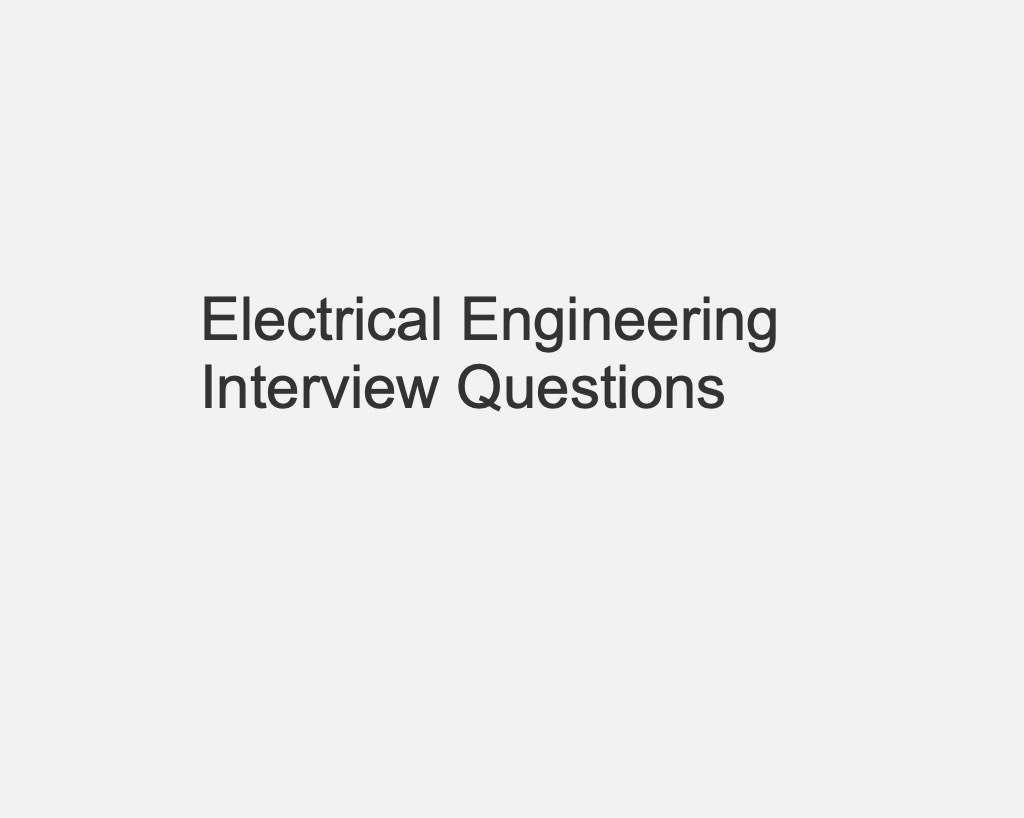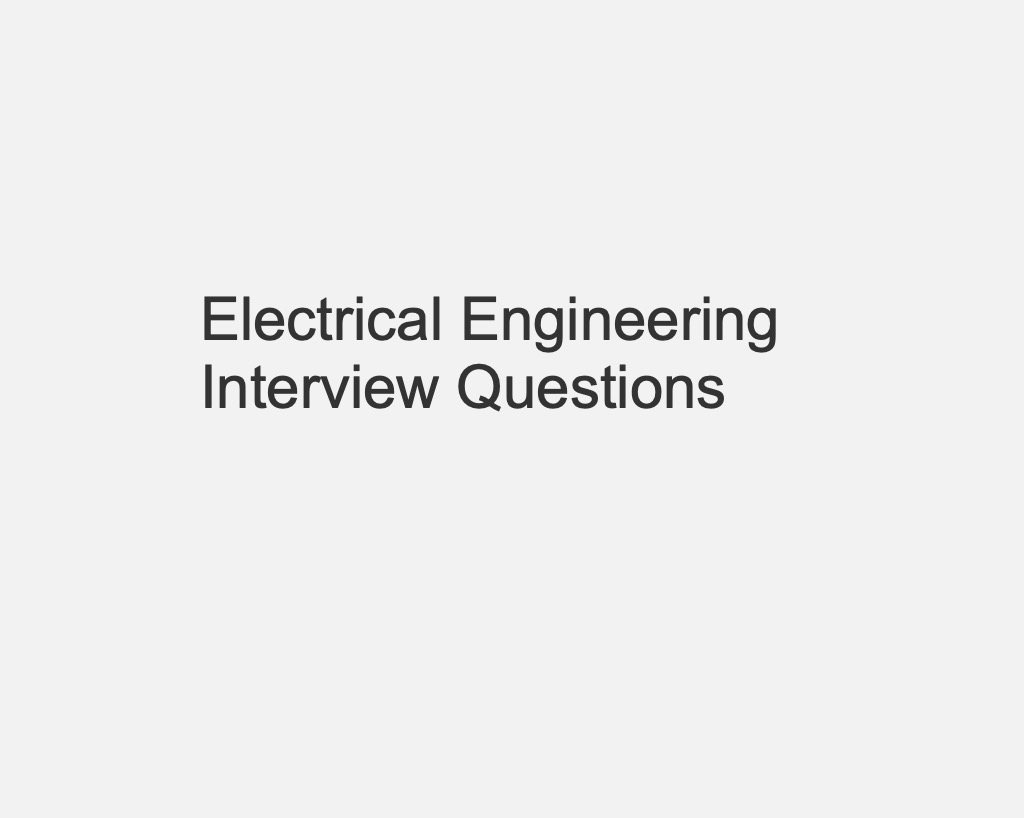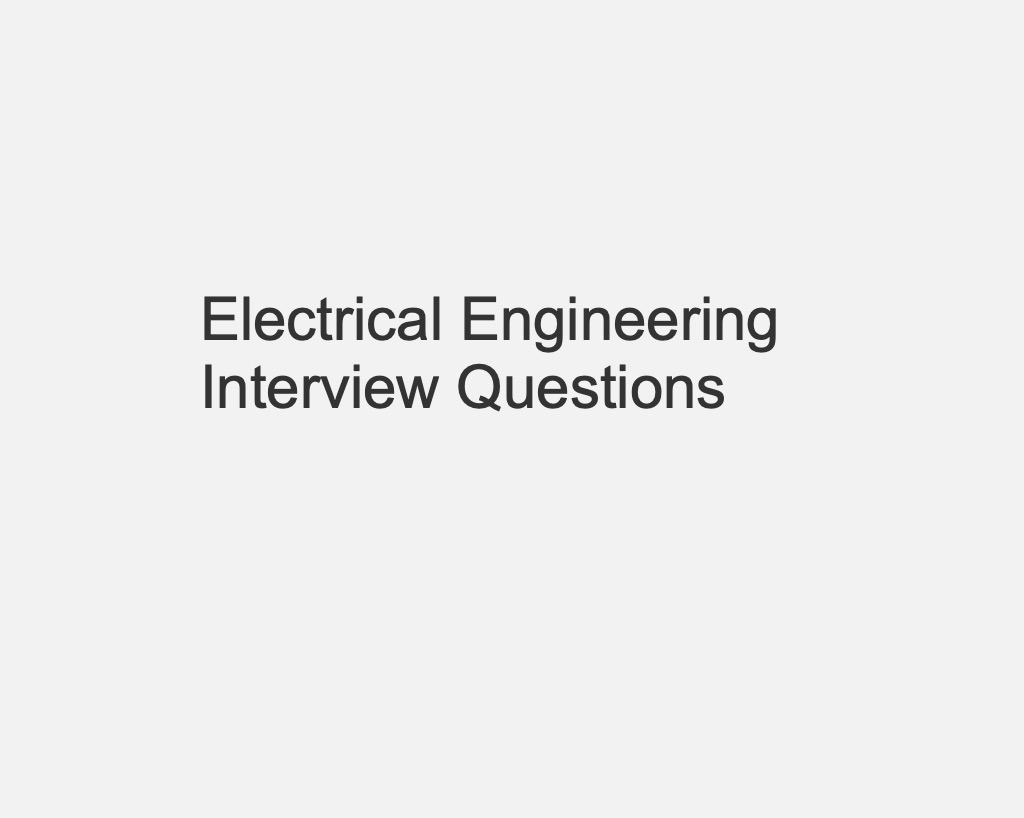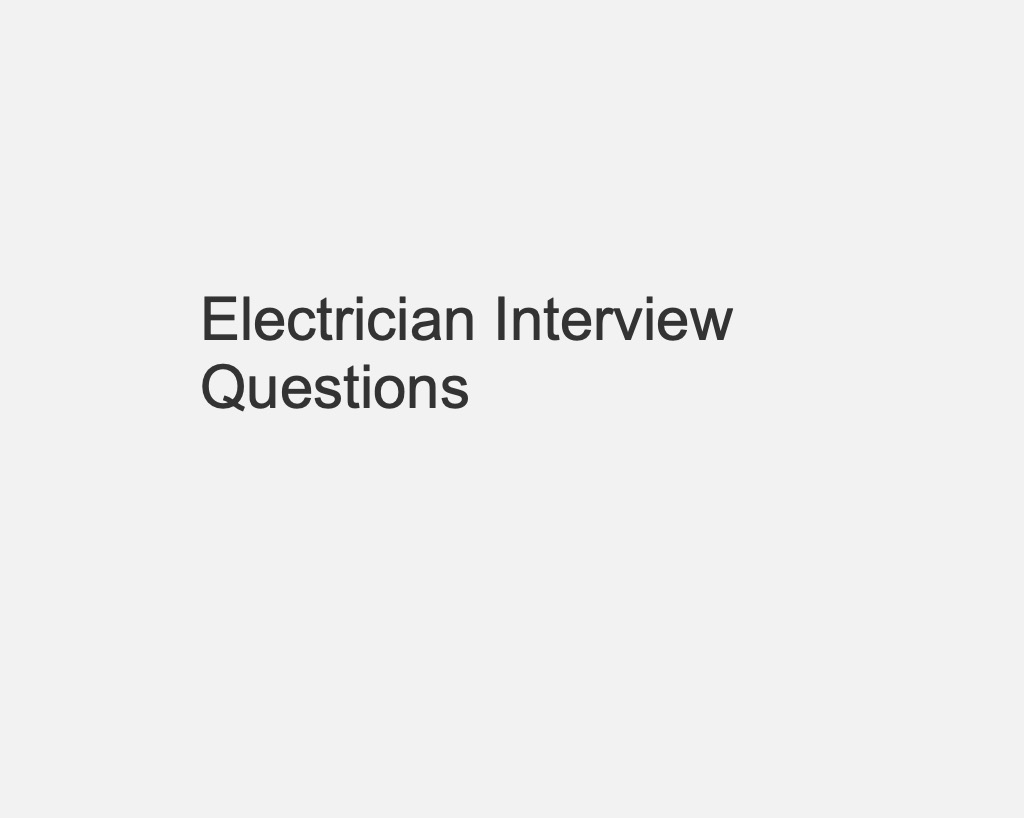Relay Interview Questions
1). What is an inverse time over current relay’s characterizing feature?
The length of time that the relay operates will be reduced as the fault current increases.
2). Mention the most important characteristics of relay contacts.
A strong construction is required.
Self-cleaning (oxides break-down quickly).
Corrosion- resistant is a characteristic.
Low contact resistance with no strictures and no bounces.
Capable of transporting rated short-term current and also rated continuous current.
3). Define pickup value & reset (or) dropout value
Pickup value:
It is the smallest actuating quantity value; when its value is increased from 0 to pickup value, the relay is energized.
Reset (or) Dropout value:
It is the actuation quantity with the highest value; if its value is less than the pickup value, the relay will reset (or) de-energize.
4). Mention the relays’ initial commissioning checks.
Relays commissioning checks on
Check the pickup and dropout values.
The insulation resistance of the contacts and the relay coil.
Time delay (if the relay cannot be instantaneous), operational time value verification of the relay.
Check that the relevant circuit breaker trips upon the activation of the specific relay.
Contact continuity checks following relay energisation.
Check for correct plug-shorting contacts.
Check to see if the CTs and PTs are rectified in the correct polarity.
Relay burden assessment.
Primary injection test.
Secondary injection test.
5). Describe I.D.M.T.
IDMT stands for inverse time relay with a set minimum time.
6). What generally is a negative sequence reactance?
When there is an imbalance in the system, a negative sequence can occur. Their effect is to create a field that rotates in the opposite direction as the main field.
7). What is meant by zero sequence reactance?
If a machine has an earthed neutral, system earth fault will cause zero sequence current in the machine.
8). What is the purpose of over current relay (Inverse)?
It is a self-powered inverse time over current & earth fault relay used in time-graded systems for
A.C. machines,
Transformers,
Feeders, etc.
for selective phase and earth fault protection.
An adjustable inverse time/current induction disc relay with a fixed minimum time that is non-directional and substantially damped.
The relay has a low burden & low overshoot with a high torque movement. The relay disc is shaped in such a way that as it rotates, the driving torque increases & cancels out the control spring’s fluctuating restraint torque.
9). What is the advantage of a CMM relay over a standard Inv. O/C current relay?
At low currents, the inv. O/C relay underprotects and overprotects at high currents.
CMM: takes into consideration both +ve and -ve sequence currents,
i.e., single phasing
Imbalance supply conditions & gives the -ve phase three times the weightage and +ve sequence current heating is more efficient than +ve sequence current heating.
In terms,
Net Rotor Heating = I12 + 3 I22
As a result, the CMM relay protection feature is highly related to motor heating characteristic. As a result, it is also superior to a thermal overload relay.
10). What is the function of an anti-pumping relay?
When the closing signal remains even after the breaker has been closed, the anti-pumping relay is activated, and the breaker cannot be closed again in the occurrence of a tripping.
11). What is meant by lock out relay?
It is the relay that prevents the circuit breaker from closing after tripping (protection) without the operator’s attention.
12). What is 86 in relay terms?
Although it is not self-equipped with the fault sensing capabilities & is only relevant in substation protection, the master trip relay (or) lockout relay, recognized by ANSI code 86, performs a significant function as an intermediator connecting the protection relay and control points.
13). Why are relays 86.1 and 86.2 used?
For automatic restoration in EMTR (Electrically Detected Magnetic Resonance), all electrical protection is connected to 86.1 relay, & under voltage protection is connected to 86.2 relay.
14). What is the purpose of the fuse failure relay?
This relay prevents inappropriate circuit breaker tripping by detecting a failure or unintentional removal of the voltage transformer secondary fuses. This relay comprises of a hinged armature unit that is operated by rectified AC electricity. A common relay for three phases is created by winding three coils for the three phases over a single core. Each coil is linked to one of the secondary fuses on the voltage transformer, and in a healthy system, the secondary fuse short circuits the coil and prevents it from being powered. The relevant coil(s) under the relay are immediately energized and activated to open trip circuit when one or more fuses are removed.
15). What is the differential relay’s mode of operation?
When two (or) more similar electrical variables have phasor differences that are greater than a specific threshold, a differential relay gets operated.
16). In what applications are Impedance, Reactance, and MHO relays used?
For medium-length lines with phase defects, the impedance relay is effective. While Mho type relays are most appropriate for lengthy transmission lines & particularly when synchronization power surges may occur, reactance type relays are used for ground faults.
17). What is meant by a reverse power relay?
When the generation units are turned off, a reverse power relay is utilized to block the flow of electricity from the grid to the station generator.
18). What are the fundamental components of a protective relay?
A protective relay’s fundamental components are
Sensing element,
Comparison element, and
Control element.
19). Define the terms ‘sensitivity’ & ‘selectivity’ of a relay.
A relay’s sensitivity refers to its ability to function dependably under real-world conditions that result in the least operating propensity (tendency).
Selectivity refers to the capacity to locate the point at which the fault arises and choose the closest circuit breaker (CB) in the system to trip in order to clear the problem with minimal system damage.
20). What disadvantages are in electromagnetic relays?
Due to the pulsating nature of emf-electromagnetic force, the vibration of the relay armature at twice the supply frequency makes the relay buzz and make noise.
It also damages the contacts of the relay by causing them to vibrate at twice the supply frequency.
As a result of the circuit’s make-and-break, there will be sparking and inconsistent operation of the relay’s operative circuit contacts.
21). Why is the directional feature accessible for impedance relay but not accessible for reactance relay?
The reactance relay can trip even when functioning normally at (or) near unity power factor, hence the directional functionality offered for impedance relay should not be utilized for reactance relay. It is necessary for the reactance type distance relay to have a directional unit that is inactive under typical load levels.
22). How is a distance relay better for protecting transmission lines than overcurrent protection?
In comparison to overcurrent protection, distance relay is better at protecting transmission lines.
The advantages include
Quicker protection,
Easier coordination and application,
Permanent settings that don’t require modifications,
Reduced impact from generation levels and fault current magnitude, and
Support for heavy line loading.
23). How accurately do attraction armature relays achieve time lag?
By connecting a fuse in parallel with the instantaneous type attraction armature relays, an oil dash pot, an air escape chamber, a clockwork mechanism, or another device, it is possible to create a clear time lag or inverse-time lag.
24). What is a Buchholz relay, and what function does it perform in the transformer?
The Buchholz relay, that utilizes gas as its power source, is a device designed to protect transformers from internal faults. The Buchholz relay immediately activates a horn for a period of time whenever a transformer develops an internal fault. If the transformer is disconnected from the circuit, the sound signal stops, otherwise the circuit is tripped by the relay’s own tripping mechanism.
25). What does Plug Setting Multiplier mean?
The ratio of the pick-up value to the fault current in relay coil is known as the plug setting multiplier.
Statement: Respect the original, good articles worth sharing, if there is infringement please contact delete.
Hobo is an electrical engineer with 10 years of work experience, mainly responsible for designing, developing and maintaining electrical systems and equipment.













